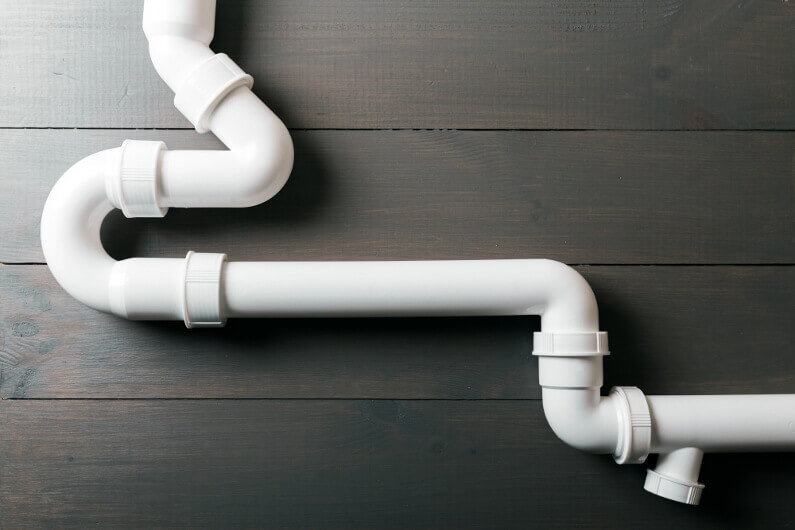How Proper Ventilation in Plumbing Systems
How Proper Ventilation in Plumbing Systems
Blog Article
Presented here underneath yow will discover additional very good information and facts around The Upsides of Proper Ventilation in Plumbing Design.

Proper ventilation in pipes systems is frequently ignored, yet it is crucial for maintaining the capability and safety of your home's pipes. Ventilation assists regulate air pressure, prevent the accumulation of dangerous gases, and guarantee the reliable removal of waste. In this overview, we will explore the relevance of proper plumbing ventilation, how it functions, and the advantages it offers your pipes system.
Recognizing Ventilation in Pipes
Air flow in plumbing describes the network of pipes that permit air to stream via the drainage system. These vents offer several functions, consisting of managing atmospheric pressure within the pipes, stopping drain gases from going into the home, and helping in the smooth flow of wastewater.
Exactly How Air Flow Works in Pipes Equipments
Air Pressure Guideline
Correct ventilation preserves well balanced air pressure within the pipes system. When water moves through pipes, it displaces air. Without adequate air flow, this variation can develop negative pressure, leading to slow drains or siphoning of water from catches, which can trigger unpleasant odors to leak right into the home.
Preventing Sewer Gas Build-up
One of one of the most critical functions of plumbing vents is to stop sewage system gases, such as methane and hydrogen sulfide, from accumulating within the home. These gases can present major health and wellness threats and are very combustible. Vent pipelines allow these gases to get away securely outside.
Aiding in Waste Elimination
Air flow aids in the effective elimination of wastewater by protecting against airlocks in the drain system. When air can move freely via the vents, it enables water and waste to move efficiently with the pipes, lowering the risk of obstructions and back-ups.
Sorts Of Plumbing Vents
Main Heap Vent
The major stack air vent, likewise referred to as the vent pile, is the key air vent in a pipes system. It prolongs from the major drain line up via the roofing, permitting gases to escape and fresh air to enter the system.
Branch Vent
Branch vents link to the primary stack air vent and serve specific components, such as sinks, toilets, and showers. These vents ensure that each fixture has appropriate air flow to operate effectively.
Air Admittance Shutoff (AAV).
An Air Admittance Valve (AAV) is a one-way shutoff that enables air to get in the plumbing system without the demand for a conventional air vent pipeline extending via the roof. AAVs are generally used in remodellings or areas where mounting a common vent is not practical.
Indications of Poor Air Flow in Plumbing.
Slow Draining Fixtures.
If your sinks, bathtubs, or commodes are draining pipes gradually, it could be a sign of poor air flow. Insufficient air flow can produce a vacuum cleaner result, making it tough for water to drain pipes properly.
Gurgling Seems.
Gurgling audios originating from drains pipes are commonly a result of air being drawn with water traps as a result of adverse stress in the pipelines. This is a clear indication of not enough ventilation.
Unpleasant Smells.
Drain odors inside your home are a warning that your plumbing system is not appropriately ventilated. This might indicate that drain gases are not being adequately vented outside, leading to potentially harmful problems.
Common Ventilation Blunders.
Inadequate Vent Sizing.
Utilizing small air vent pipelines can lead to inadequate air flow and stress discrepancies in the system. It's necessary to make use of vents that fulfill the particular needs of your pipes system.
Improper Vent Placement.
Putting vents also far from the components they offer can decrease their performance. Proper positioning guarantees that air can move openly and efficiently through the system.
Ignoring Code Needs.
Building codes offer specific standards for pipes air flow. Overlooking these codes can result in a system that fails to operate appropriately and may cause expensive repairs or carcinogen.
Benefits of Proper Air Flow.
Enhanced System Effectiveness.
Properly ventilated plumbing systems operate extra efficiently, with less blockages, faster draining pipes, and less stress on the pipelines. This performance prolongs the life expectancy of the plumbing system.
Improved Air Quality.
By avoiding sewage system gases from entering your home, appropriate ventilation adds to far better interior air high quality, making your living setting healthier and extra comfy.
Protecting Against Water Damage.
Adequate air flow helps protect against water from being siphoned out of catches, which can lead to sewer gases entering the home and triggering water damages over time.
Actions to Make Sure Proper Air Flow.
Consulting Pipes Codes.
Always seek advice from regional pipes codes when designing or modifying your plumbing system. These codes provide the needed standards for appropriate venting and guarantee your system meets safety and security requirements.
Normal Assessment and Upkeep.
Routine evaluations can aid recognize possible air flow concerns before they become major problems. Upkeep tasks, such as cleaning up vent pipelines and looking for clogs, are crucial for maintaining the system in good working order.
Specialist Setup.
For brand-new installments or major alterations, it's important to work with a professional plumber. They have the competence to make certain the ventilation system is correctly created and set up according to code.
Conclusion.
Appropriate ventilation is a vital component of any plumbing system, guaranteeing that it operates efficiently and safely. By recognizing the value of ventilation, identifying the signs of bad ventilation, and taking steps to preserve your system, you can stop expensive problems and safeguard your home's air high quality.
4 Things You Should Know About Your Plumbing Vents
What Plumbing Vents Are
Also called a vent stack, a plumbing vent is a vertical pipe attached to your drain line that runs through your roof. The plumbing vent pipe, or plumbing air vent, removes gas and odors from your plumbing system and allows fresh air to enter the pipes, helping the water to flow out of the drain pipes.
What Plumbing Vents Do
Plumbing vents have two basic functions. One of which is to allow unpleasant smelling wastewater and sewer gasses to escape your plumbing system instead of entering your home. Plumbing vent pipes are typically located on roofs, away from windows, to ensure the fumes exit the home completely.
The other function of the plumbing vent is to move fresh air into your plumbing system. This helps move water through every plumbing fixture in your house, like toilets and sink drains. Think of the way in which you need to let a little air into the bottle as you pour soda in order to make the drink flow smoothly.
Different Types of Plumbing Vents
True vent: This is the most common vent option. In simplest terms, a true vent is a vertical pipe attached to your drain line that exits through the roof. They often function as the main vent that other fixtures can connect to. Re-vent pipe or auxiliary vent: Attached to the drain line near specific plumbing fixtures, re-vent pipes run up and over to connect to the main vent. Common vent: Two plumbing fixtures installed on opposite sides of a wall are typically tied into the vent stack using something known as a sanitary cross. Wet vent: This venting option operates as a drain pipe and a vent at the same time. Wet vent drainage systems drain water from one fixture while venting the air from another. Although they’ve been used for over 100 years, wet vent systems have only recently been added to the plumbing code in many areas. If you’re planning on installing one in a bathroom remodel, make sure you check your local code prior to construction. Loop vent: For free-standing fixtures like kitchen island sinks, loop vents are ideal. These vent pipes run under the floor, rise from the P-trap, and create a loop inside the cabinet sink. Air admittance valve: An AAV is a one-way mechanical valve typically installed at the site of the plumbing fixture. AAVs allow venting to occur without having to tie into a larger venting system. They’re ideal for venting fixtures where you aren’t able to easily connect to an existing vent system. Common Plumbing Vent Issues
Although vent pipes typically don’t have water flowing through them, they’re still subject to many typical plumbing issues. For example, clogs are one of the most common problems associated with sewer vent pipes. If your vent pipe gets clogged, all of your plumbing fixtures tied into the vent stack will be affected.
A sink with a slow drain that bubbles and gurgles or a strong sewage smell around your toilet are both indicators that your toilet vent pipe is clogged. Because most vent pipes exit through the roof, old leaves, twigs or even a bird’s nest could be clogging the pipe.
Clogs in your vent pipe system cause a buildup of negative pressure, meaning that water won’t be able to flow out of your home very well. It’s similar to putting your finger over the opening of a straw to trap water inside. When you remove your finger, the water is able to flow out of the straw.
If you suspect you have any blockage in your vent, make sure you have a professional come examine the situation. Left unchecked, a blocked air vent can lead to other costly repairs, like leaks and sediment buildup.
Under Pressure
Pipe vents are essential aspects of a home’s plumbing system. Owning a home means learning about all sorts of things you never put much thought into before. But by understanding as much as you can about the important systems of your home, you can keep those budgets intact and those anxiety levels low.
https://www.homeserve.com/en-us/blog/home-improvement/plumbing-vents/

We were made aware of that editorial about What Is A Plumbing Vent & How Do They Work? from an associate on another site. Please take the opportunity to promote this write-up if you enjoyed reading it. I praise you for your time. Return soon.
Course Detail Report this page